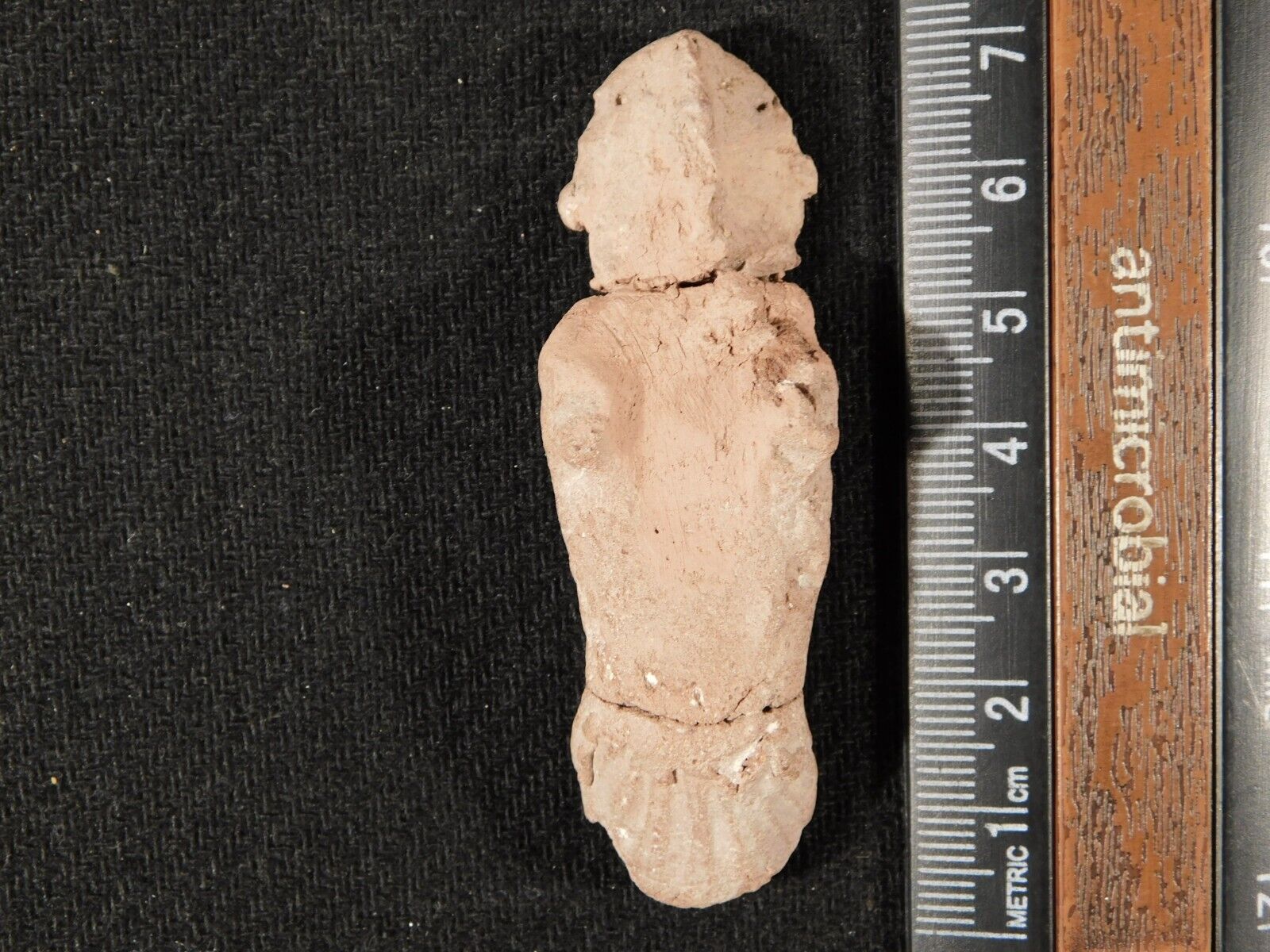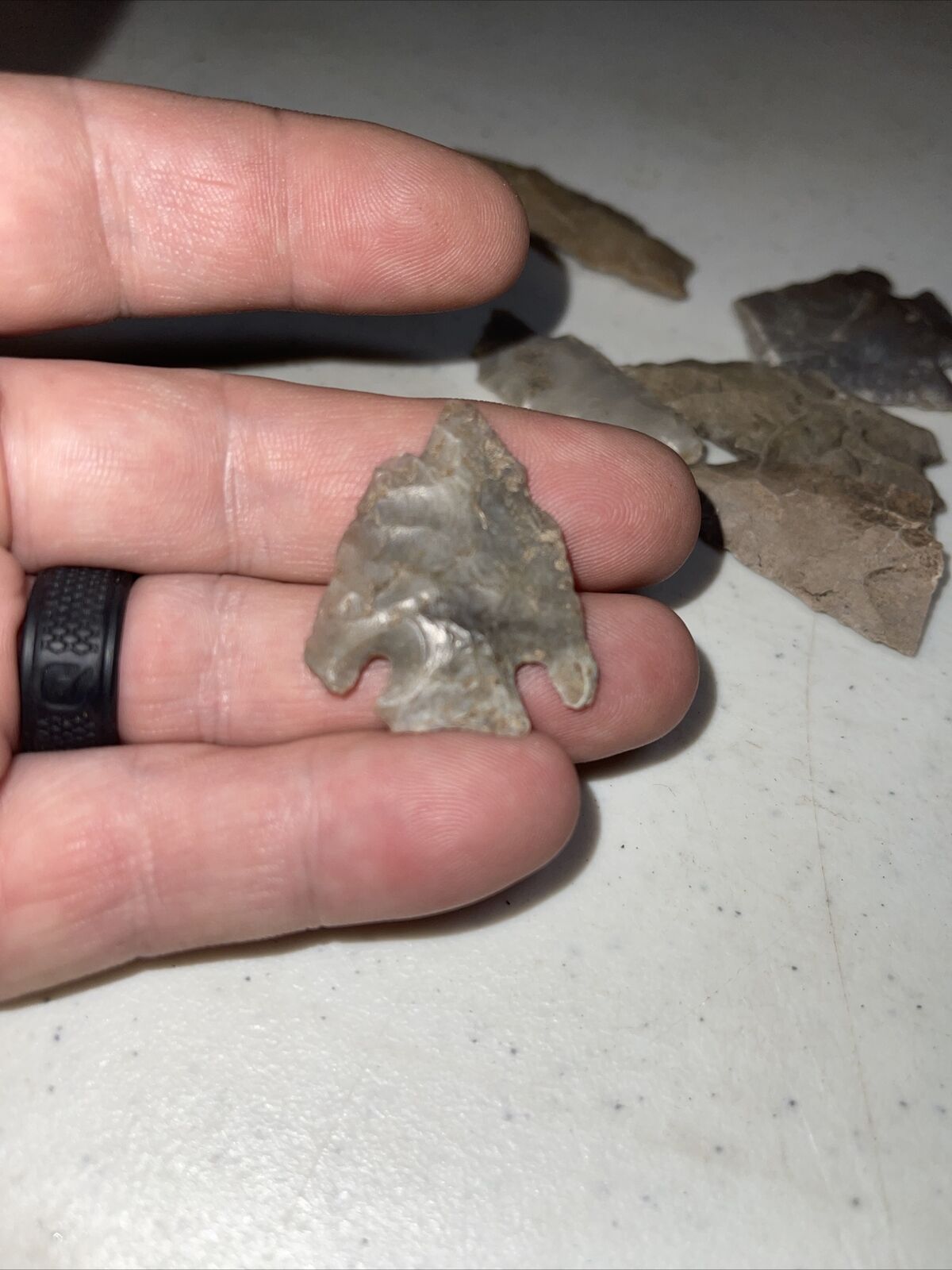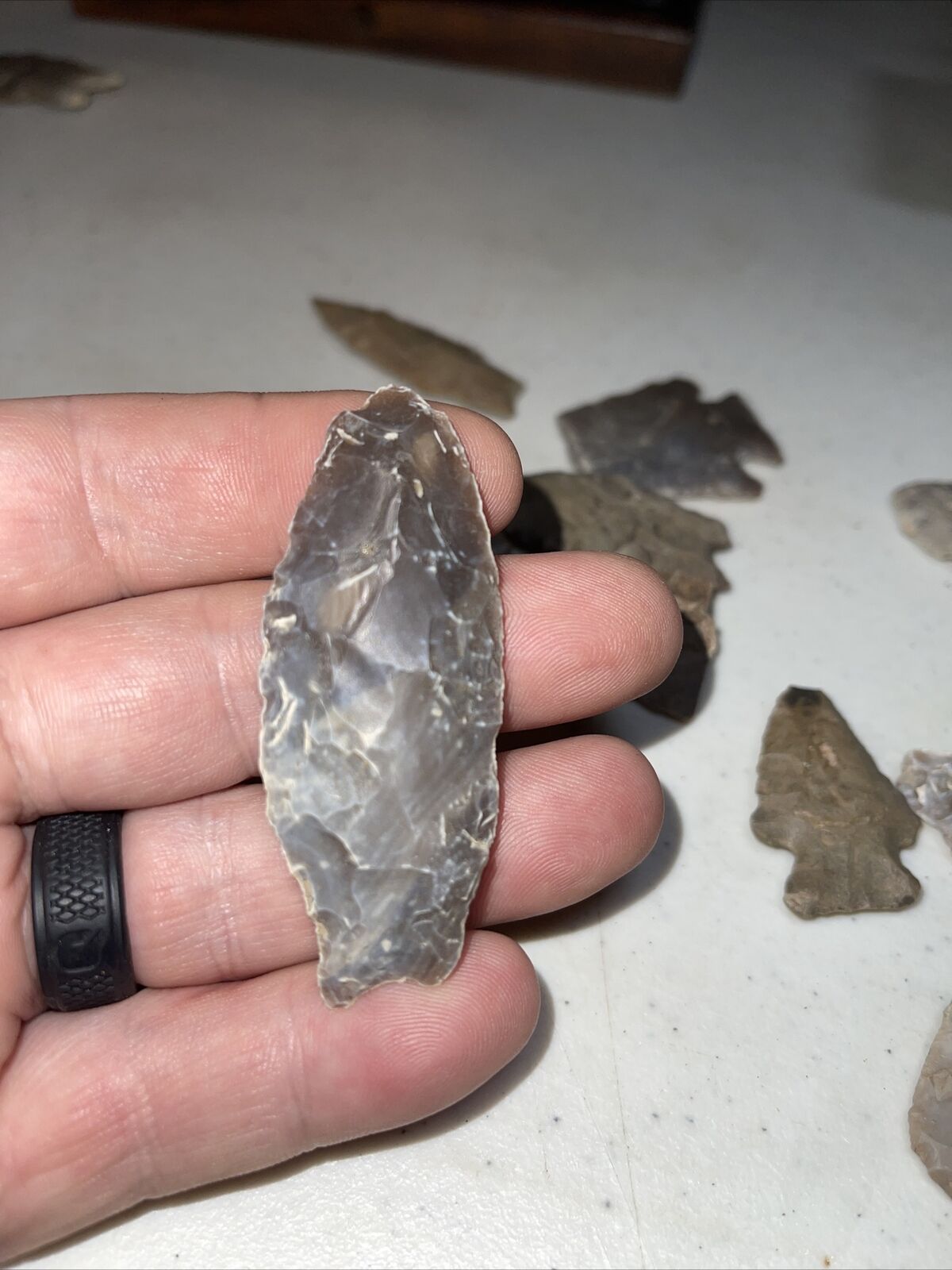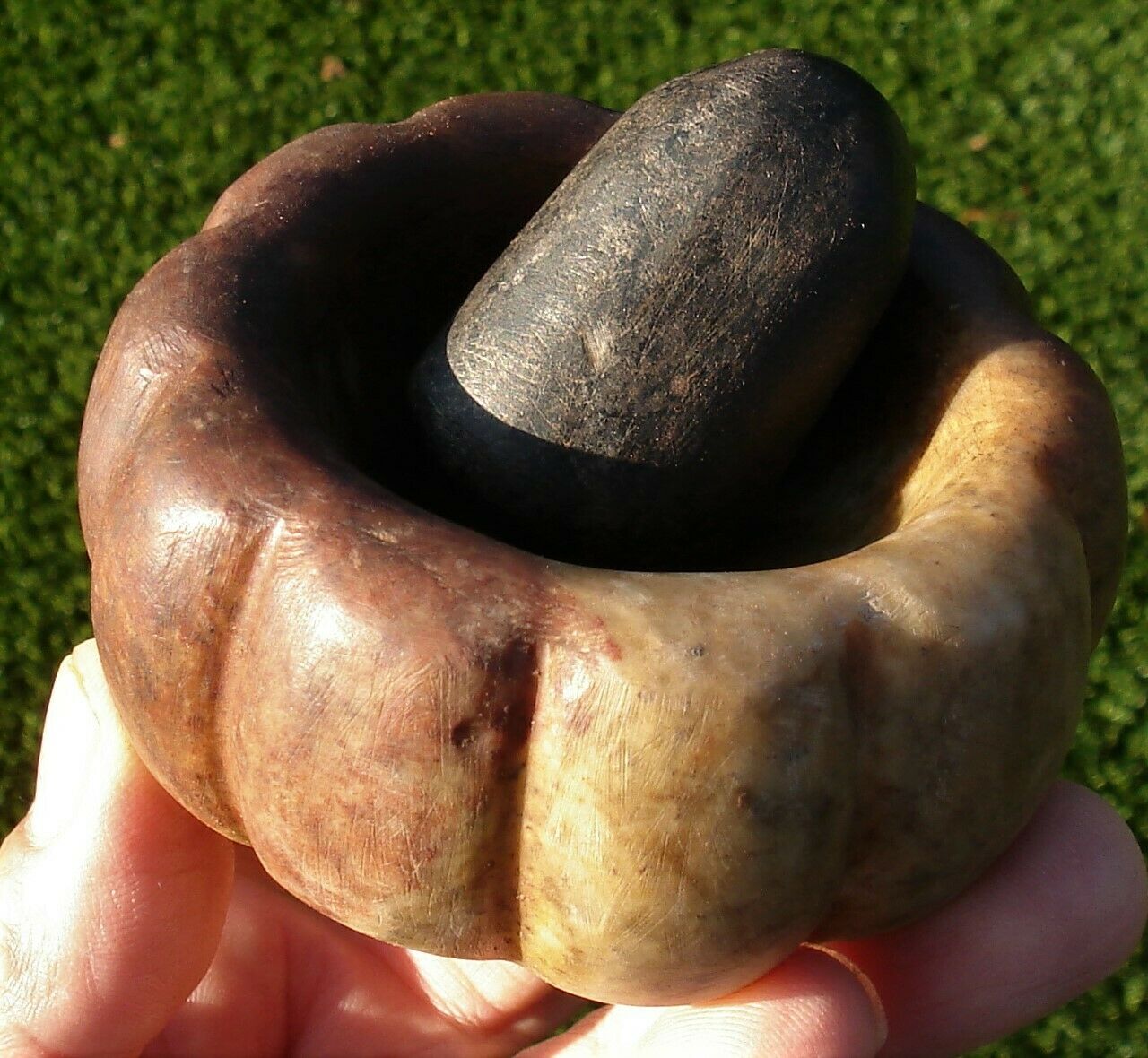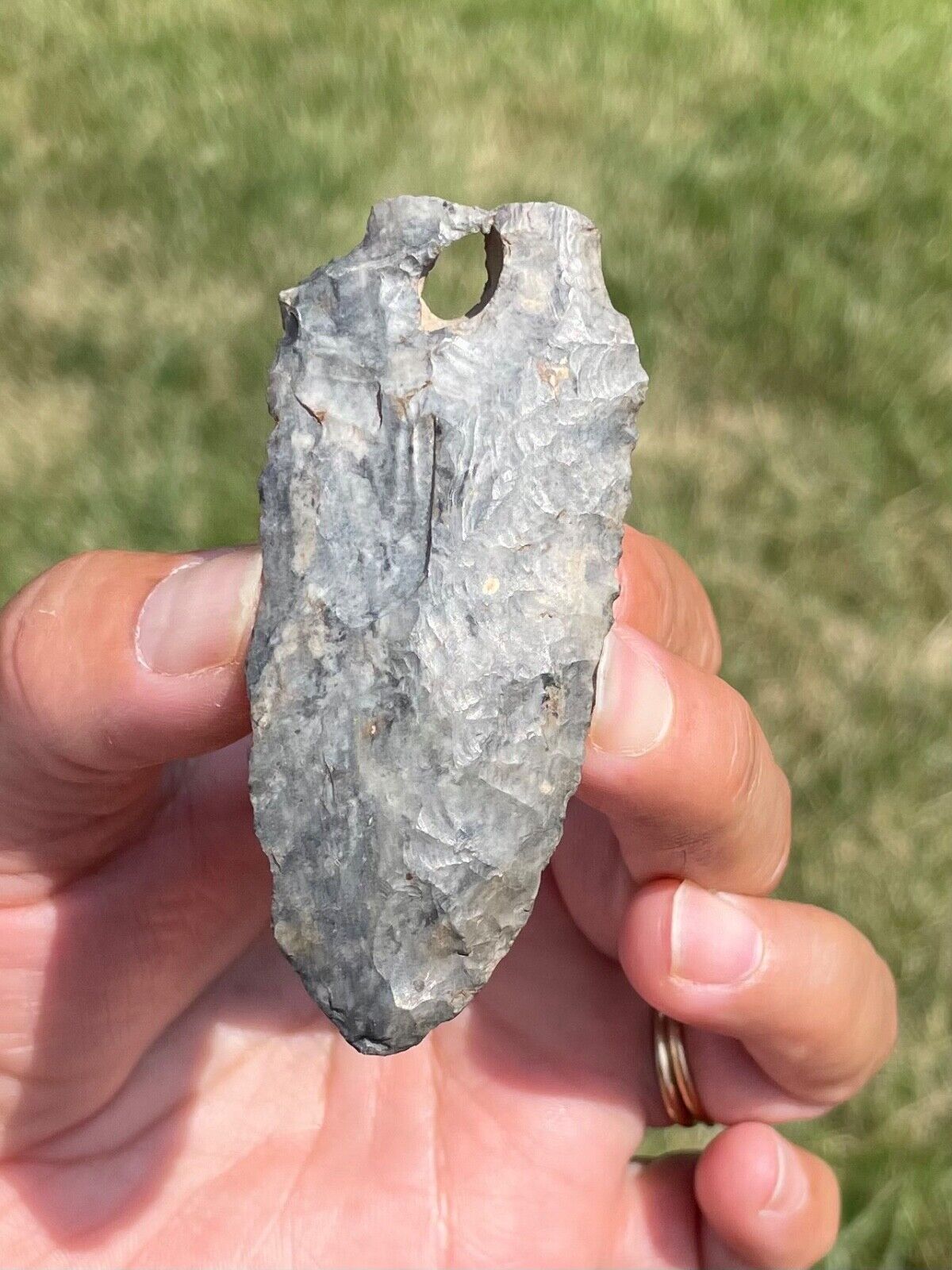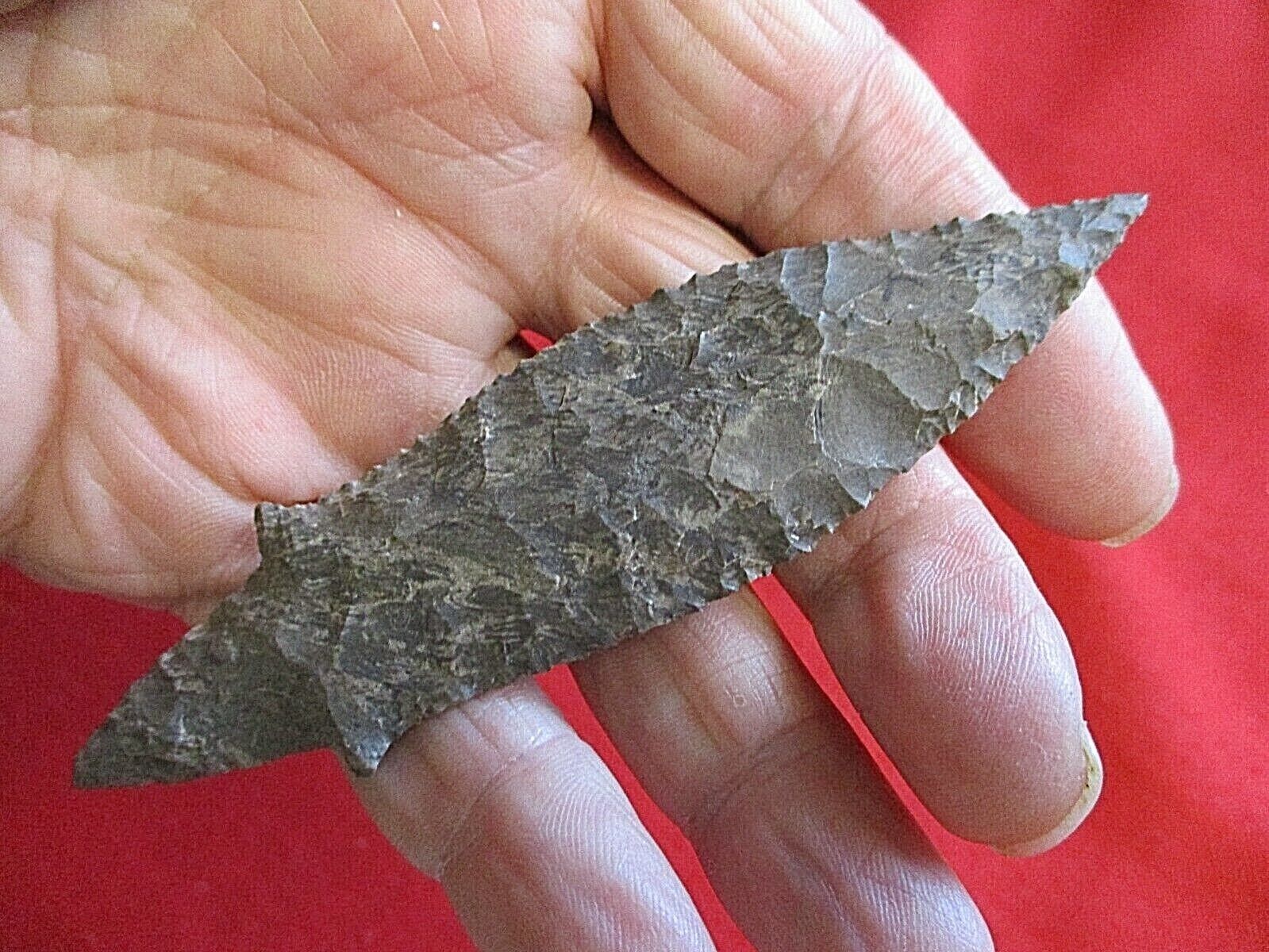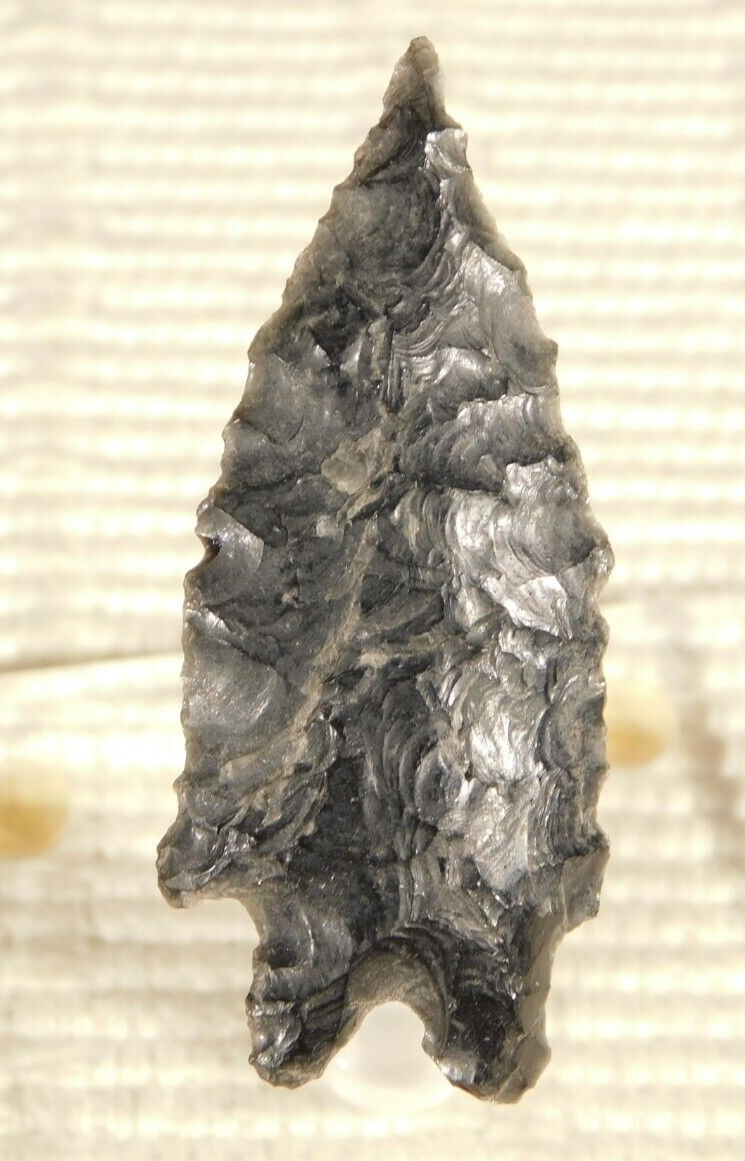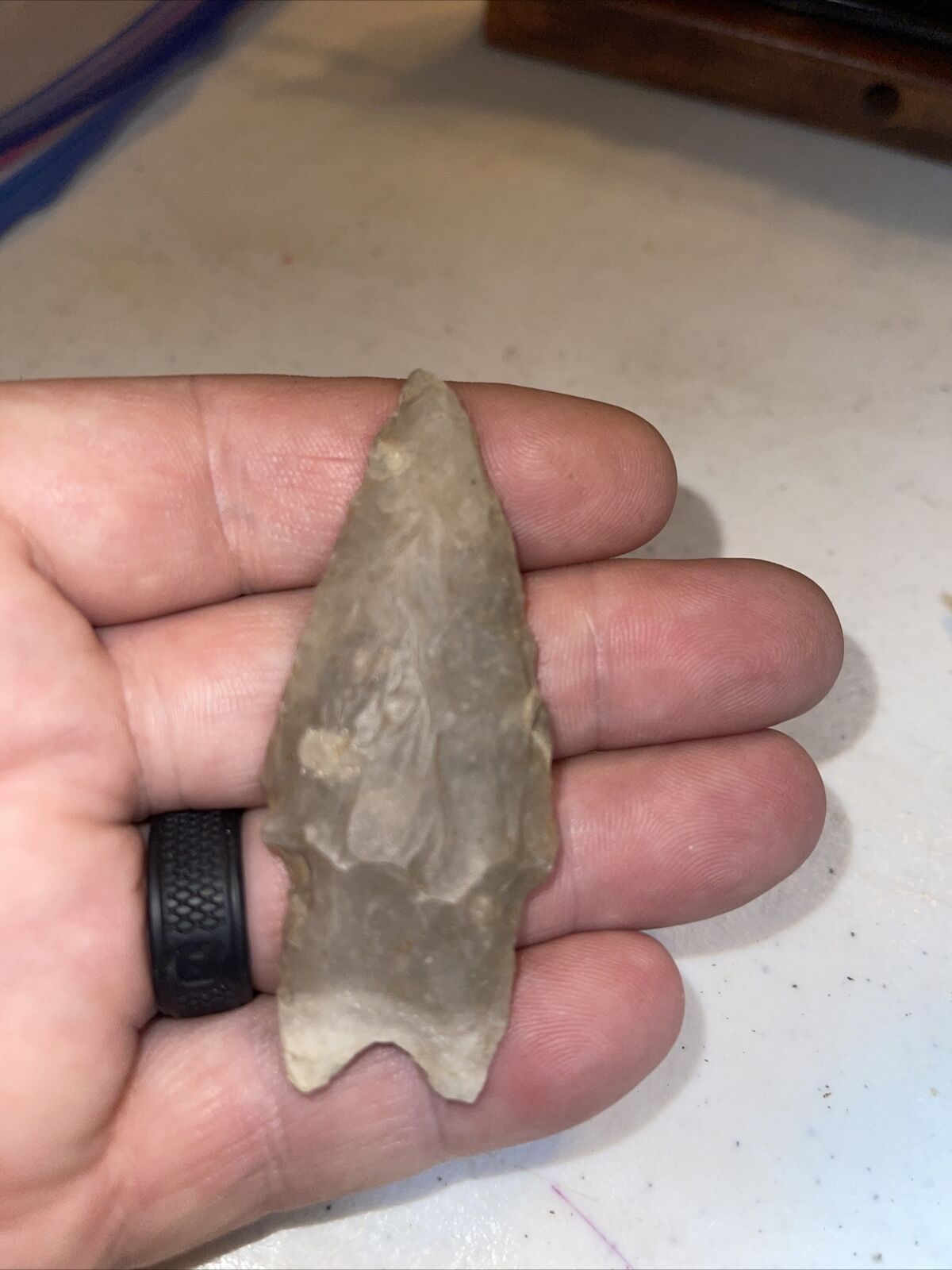-40%
PESTLE: DOUBLE-NIBBED, PACIFIC NORTHWEST, COLUMBIA RIVER, OREGON
$ 105.04
- Description
- Size Guide
Description
PESTLE: DOUBLE-NIBBED, PACIFIC NORTHWEST, COLUMBIARIVER, OREGON
Height: 6”
Base-Diameter: 3
¼
”
Weight: 1 lb
15.9 oz
A
double-“nibbed-top” pestle from the Columbia River.
Nibbed pestles are
a rare, strange category of artifact.
Essentially at the top hand grasping end are one or two
projections. Sometimes the look like a
nib, other times they are extensions of the pestle’s handle—like the one listed
here.
This artifact came
from the northern bank of the Columbia River, around 85 miles upriver from
Portland.
For thousands of
years Native Americans
lived here and made treks to this ocean,
salmon-rich region.
For many years,
local people had scoured that part of the river in search of stone
artifacts. This curious pestle is from
that area.
The pestle is a
form of hard steatite with a somewhat flat base the extends from a conical
handle. At the top end are two vertical
extensions that almost look like horns.
The pestle base
has several chips/dings along with many abrasion scratches and minor
top-imperfections.
To start, this
artifact was NOT made for continuous, heavy pounding. The source stone—looking within from the
chips—is not strong enough for generations of bashing or even for normal, food
preparation use. Yet, care was taken to
craft it into a form that was very familiar to those using it, which may give
indication as to its function.
This type of
pestle, based on its source-stone would be perfect for occasional use—perhaps
for some necessary ceremonial/spiritual ceremony. The base-ends condition would seemingly
support this idea.
To this
researcher, the “nibs” look like horns of some type. But alas, we will never
know for sure for two reasons endemic to Columbia River collection artifacts:
1.
This was a
“surface” find—something pulled from the ground over 100 years ago with no
context to explain it.
2.
This region is
now under at least 60 feet of water due to the 1950/60s construction of the
Dalles Damn project which flooded this area.
The most we can do
is speculate.
The pestle base
has several chips/dings along with many abrasion scratches and minor
top-imperfections.











